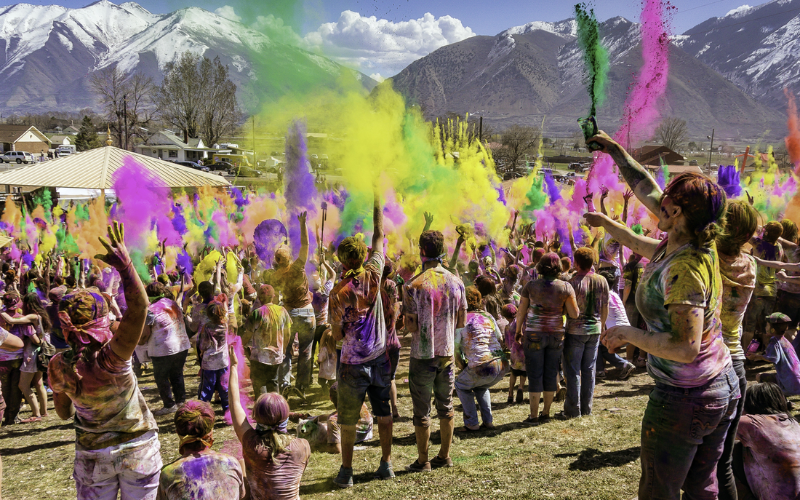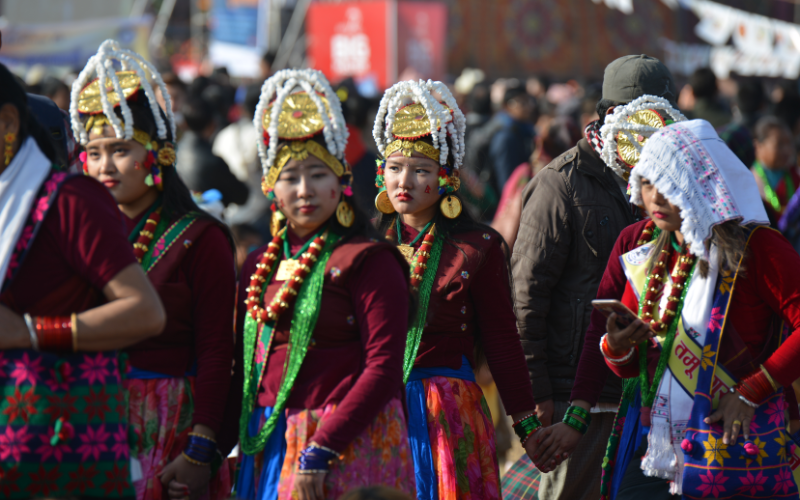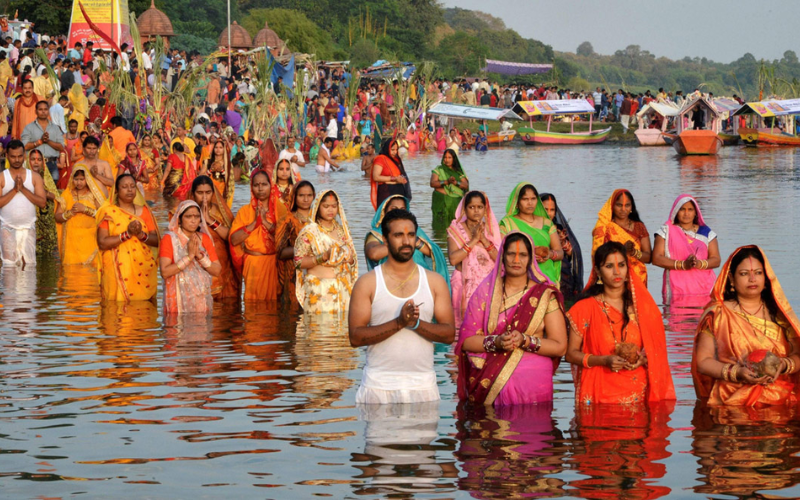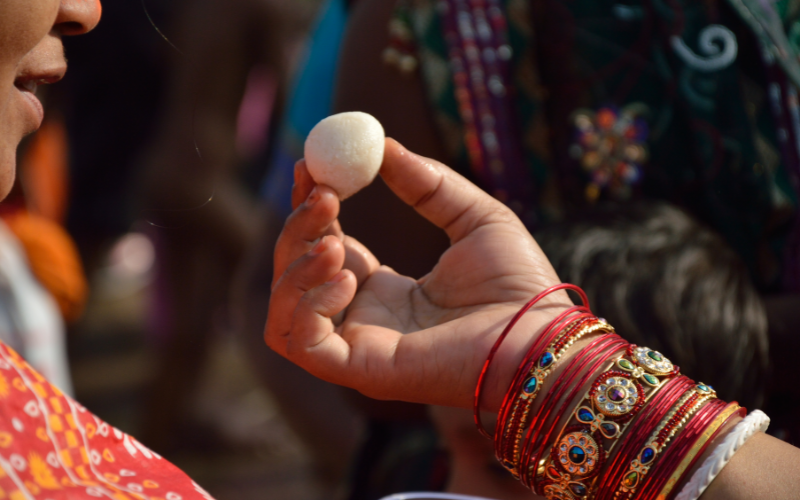Few countries celebrate life quite like Nepal. Home to over 120 ethnic groups and a dazzling mix of religions, Nepal’s calendar is filled with festivals that honour gods, nature, ancestors, and community. Every celebration here tells a story — of victory, renewal, devotion, or sheer joy. From the high Himalayas to the fertile Terai plains, here are ten remarkable Nepali festivals that showcase the country’s extraordinary cultural richness.
Dashain – The Festival of Victory and Reunion
When: September–October
Dashain is Nepal’s longest and most important festival, symbolising the triumph of good over evil. It celebrates the goddess Durga’s victory over the demon Mahishasura, marking nine days of worship (Navaratri) and culminating in Vijaya Dashami. Families return home from across the country, elders bless younger relatives with tika (a red mark of blessing) and jamara (barley shoots), and kites fill the skies. For Nepalis, Dashain is as much about faith as it is about family.
.png)
Tihar – The Festival of Lights and Affection
When: October–November
Known as the “festival of lights”, Tihar resembles India’s Diwali but carries uniquely Nepali traditions. Over five days, people honour crows, dogs, cows, and the goddess Laxmi, lighting homes with oil lamps and candles. The final day, Bhai Tika, celebrates the bond between brothers and sisters, when sisters bless their brothers for long life and prosperity. Streets glow with lights and laughter, and the sound of Deusi-Bhailo songs fills the air.
Holi – The Festival of Colours
When: February–March
Holi turns Nepal into a canvas of colour. Celebrated to mark the victory of good over evil and the arrival of spring, people joyfully throw coloured powders, splash water, and dance in the streets. In the Terai region, Holi festivities often last two days — one for women and one for men — reflecting regional custom. It’s a day when social boundaries blur, and everyone becomes part of the fun.

Buddha Jayanti – The Birth of Enlightenment
When: April–May
Buddha Jayanti commemorates the birth, enlightenment, and parinirvana (passing) of Siddhartha Gautama, the Buddha. Lumbini, his birthplace, becomes the heart of global pilgrimage, while stupas such as Swayambhunath and Boudhanath host grand processions, chants, and offerings. Peaceful and reflective, it’s one of the most sacred days for Buddhists — and an inspiring experience for visitors.
Indra Jatra – The Festival of the Living Goddess
When: August–September
Indra Jatra is among the most vibrant festivals of the Newar community, dedicated to Indra, the god of rain and the heavens. The eight-day celebration features the raising of a ceremonial pole (lingo), masked dances, and the grand chariot procession of the Kumari — Kathmandu’s Living Goddess. Myth holds that Indra once descended to Earth searching for a sacred herb, and the festival commemorates his story. Durbar Square bursts into life with colour, music, and devotion.

Gai Jatra – The Festival of Cows and Laughter
When: August–September
Gai Jatra, literally “the cow procession”, honours those who have passed away in the previous year. Families lead cows — believed to guide souls to heaven — through the streets, or dress children as cows if none are available. What began as a solemn observance has evolved into a lively day of satire and comedy, where people lampoon politics and social issues through street performances. It’s a festival that helps communities heal through humour.
Maghe Sankranti – Welcoming the Sun’s Northward Journey
When: Mid-January
Marking the winter solstice and the sun’s northward movement, Maghe Sankranti celebrates the gradual return of warmth and longer days. Families gather to eat seasonal delicacies such as til ko laddu (sesame sweets), chaku (molasses), and yam. Among the Tharu community, the festival coincides with Maghi, their New Year celebration filled with dance, music, and community feasts.
Losar – The Himalayan New Year
When: Varies by community (December–March)
Losar, meaning “New Year”, is celebrated by various Himalayan Buddhist communities, each with their own date and customs. Tamu Losar (Gurung), Sonam Losar (Tamang), and Gyalpo Losar (Sherpa and Tibetan) are all observed with prayers, traditional dances, and lavish feasts. Homes are cleaned, prayer flags are replaced, and families come together to welcome the year ahead in joy and reflection.

Chhath Parva – Worship of the Sun God
When: October–November
Chhath Parva is a sacred festival dedicated to the Sun God (Surya), celebrated mainly by the Madhesi community in southern Nepal. Devotees fast, take ritual baths in rivers and ponds, and offer prayers to the setting and rising sun. The sight of thousands standing knee-deep in water, holding offerings as the sun dips below the horizon, is one of Nepal’s most moving spectacles of devotion.

Janai Purnima – A Sacred Thread of Faith
When: July–August
On Janai Purnima, Hindu men renew their janai (sacred thread), symbolising spiritual purity and commitment. Pilgrims flock to holy sites like Pashupatinath and Gosainkunda to bathe and pray. The day also coincides with Raksha Bandhan, when sisters tie a rakhi thread on their brothers’ wrists as a symbol of love and protection. Among Newars, the day is celebrated as Kwati Purnima, marked by eating a nourishing lentil soup that welcomes the end of the monsoon season.

In Nepal, every festival is more than a date on the calendar — it’s an expression of harmony, faith, and community. Whether it’s the thunderous drums of Indra Jatra, the warm glow of Tihar’s lamps, or the quiet prayers of Chhath, each celebration reveals a facet of Nepal’s cultural soul.
PC: Wikimedia Commons
Also Read